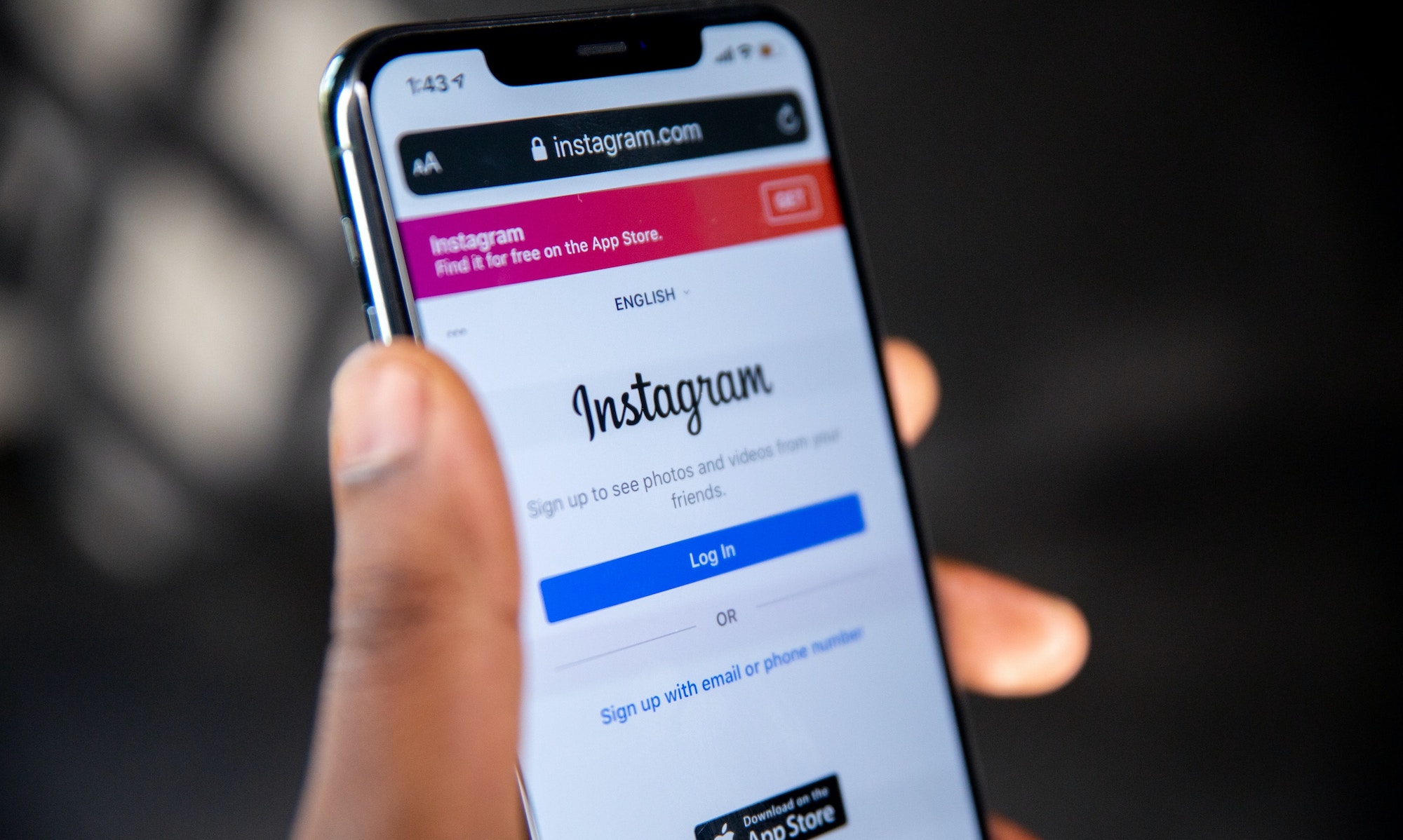Brands are mocking themselves and it might be working

Listen to this article:
—
If you’ve ever been to a standup comedy show, you’ve experienced the intrinsic relatability of self-deprecation.
Great standup comedy is about timing, delivery, and surprise—but it’s also about vulnerability. Standup comics execute vulnerability by building tension through stories rife with personal conflict, only to release that tension with a punchline that gives us permission to laugh at their misfortune.
We’re laughing with the comic, but we’re also laughing at ourselves for similar blunders. The moment we see ourselves within the comic’s vulnerability is the moment we form a connection with them.
Can brands perform vulnerability to connect with their audiences?
Brands aren’t people, but they are performers for the attention economy. We’re most likely to buy from brands whose products solve problems for us, but we’ll first find out about those products if brands reward us well for our precious time and attention.
Now that the attention economy is saturated, it’s not even close to enough for brands to deliver one-way entertainment for audiences. But it’s also resource-intensive to fully commit to the daily listen-and-respond performance of meme marketing, which comes with its own set of risks when it doesn’t go as planned.
As it turns out, brands can still use meme marketing principles without the full-scale pressures of keeping up with daily discourse. The key is deep social listening with a twist: Seek out the shitposting about your brand, convince your leadership team not to freak out, and transform the sass into self-deprecation on main.
Brands like Duolingo, Grubhub, and KFC are running through their own versions of this formula, all with successful view counts on TikTok, YouTube, and even the Lifetime Channel. But we have to ask—is the sass leading to sales?
Quick disclaimer: Self-deprecation only works when negative brand discourse is relatively benign. Discrimination (like Racism) of any kind isn’t an invitation for self-deprecating humor.
Volkswagen invented the self-deprecating ad
Self-deprecation as an advertising tool isn’t new. In 1959, German automaker Volkswagen used this exact strategy to advertise its cheap and compact Beetle car.
In the 1950s, most cars were sold with value propositions rooted in social status. Car ads waxed lyrical about horsepower, size, and speed. But despite its ties to Nazi Germany, Volkswagen was starting to see significant sales in the United States among people who bought into the benefits of owning a small, compact car.

Volkswagen didn’t have access to the social listening tools we have now, but they did perform extensive research on how advertising agencies were selling cars at the time. One thing was clear: The Volkswagen Beetle was not as powerful as a Chevrolet, nor was it as roomie as a Buick.
So, as a response to this reality, they did something that was unthinkable at the time: They were honest.
With the eye-catching headline, “Think small”, Volkswagen starts by acknowledging the Beetle’s obvious shortcomings: “Our little car isn't so much of a novelty any more. A couple of dozen college kids don't try to squeeze inside it. The guy at the gas station doesn't ask where the gas goes. Nobody even stares at our shape. In fact, some people who drive our little flivver don't even think 32 miles to the gallon is going any great guns.”
While the ad does a clever job of turning negatives into positive, it’s considered the first “anti-ad” to use negative selling copy as a way to demonstrate a brand’s self-awareness. So did it work?
In 1959, the year the first ad ran, the VW Beetle sold 88,857 cars in the U.S. In 1968, when the last series of ads in the campaign ran, Volkswagen sold 399,674 Beetles — a 350% increase in less than a decade.
From self-aware to unhinged: Duolingo, 60+ years after Volkswagen
“There were memes for years.”
As Brendan Gahan, partner and chief social officer at Mekanism creative agency, recently reflected on Duolingo’s current brand awareness strategy, he pins down the reason for its success: bravery.
The aforementioned memes are the ones that poke fun at Duolingo’s push notifications. If you’ve ever downloaded Duolingo, completed a couple lessons, then abandoned the app like most people, you’ve likely fallen victim to Duo, the brand’s passive-aggressive owl who will say anything to make sure you follow through on that day’s lesson.

The first instance of Duolingo mockery can be traced back to Tumblr in October 2017, when user knightcore photoshopped Duo the Owl with a gun in his hand. A month later, Mashable released a satirical piece called “I am the CEO of Duolingo and if our passive aggressive push notifications don't make you learn French, I don't know what will” wherein a fictional version of Duolingo’s CEO defends the company’s language choices for its notorious notifications.
But it wouldn’t be until 2019 that Duolingo would acknowledge their reputation as aggressive language lesson pushers. In March of that year, Duolingo produced an ad that “introduced Duolingo Push”—code for “Duo the Owl is going to stalk you until you finish your lesson.” At the time of this writing, the video has almost 5.7 million views.
Fast forward a year later, and Duolingo felt it was safe to produce this unhinged piece of content, which features Duo the Owl partnering up with an Angry Bird to attack a bar patron who ignores his Duolingo notif while enjoying a beer with his friends.
The operative word here is “unhinged”, which Zaria Parvez, Duolingo’s social media coordinator, has embraced to create the brand’s explosive TikTok following (2.2M followers). After years of avoidance followed by toe-dips on YouTube, Duolingo is diving deep into the self-mockery pool—and it may be working for them.
In 2020, Duolingo reached 500 million downloads, a 30% increase from the previous year. Many of those downloads seem to have turned into revenue; in 2020, Duolingo made $161 million in revenue, a 106% increase from the previous year.
While the increase could be the result of the pandemic—who didn’t think they could learn a new language during early lockdown?—Duolingo’s 2021 numbers are set to surpass revenue in 2020. During the first three quarters of 2021, Duolingo made almost $160 million in revenue.
We won’t know how much of Duolingo’s revenue can be traced back to their TikTok account, but one thing is for sure: Duolingo’s total embrace of self-deprecation as strategy is something we love to see.
Even more unhinged content: KFC’s absurdity spiral
If you missed the trailer for KFC’s mini-movie on Lifetime Channel, stop what you’re doing right now and watch it:
You couldn’t be blamed if you thought the trailer was the ad, but no—A Recipe for Seduction is a real 20-minute movie that aired on Lifetime on December 13, 2020. Critics reviewed it like a real movie, and it has a 70% score on Rotten Tomatoes.
A mix of self-deprecation and absurdity, A Recipe for Seduction is but one cog in the wheel of wtf marketing for KFC. In the past few years KFC has released a dating simulator with a hot version of the Colonel himself, a gaming console with a built-in chicken warmer, and fireplace log that fills your home with the lovely scent of fried chicken for the holidays.
What you can also smell from a mile away is KFC’s gen Z strategy, which has all the ingredients of a ploy to attract younger—and more health conscious—folks. Similar to Doritos, KFC is running the gaming-antimarketing-meme play to maintain relevance and future-proof revenue.
So is it working?
Well, maybe—Ypulse, a New York youth marketing firm, interviewed 8,494 gen Z consumers about their favorite brands, and KFC just broke the top 100. But overall, you may be surprised to find out that KFC same-store sales grew 19% over a recent two-year period. KFC opened 522 new restaurants worldwide in Q2 2021 alone.
Absurd as they may be, KFC proves that there’s no need to stifle a reimagining of your brand’s symbol. If Colonel Sanders can be played by Mario Lopez or reincarnated as a hot anime date, other brands may start to realize their own mascots aren’t sacred—and that’s just a lot more fun for everyone to see.
Mock Watch 2022: Brands that should just laugh at themselves already
Self-deprecation and mockery may not be an effective strategy for every brand, but some companies have been so thoroughly memed that it seems absurd they’re not jumping on the opportunity to mock themselves.
Whether because their leadership team is afraid or they just don’t see the value, these are the brands audiences are already mocking so why haven’t they just leaned into it already?
Grubhub
You’ve never seen a commercial so universally reviled as the Grubhub Delivery Dance.
In two months, the video received more than 882,000 views but with 65,000 dislikes on YouTube versus 15,000 likes. Called everything from “cringe” to “insane”, the commercial made the rounds on various subreddits and Twitter accounts dedicated to hated commercials.
Food Theory, a YouTube channel dedicated to food myths, uploaded an 18-minute video dedicated to deconstructing supposed “lore” around the commercial, suggesting everything from a love triangle between characters to a precursor to a Jimmy Neutron revival.
Hey Grubhub, if you’re reading—lean into the chaos and give the people what they want: the most unhinged soap opera narrative you can possibly dream up for every misunderstood Delivery Dance character.
Swappie
Swappie is an Finnish seller of refurbished iPhones, and they’ve taken over YouTube in Ireland with very persistent, repetitive audience targeting.
The ads are seen so much by people in Ireland that one Reddit thread is called “Spending more time watching Swappie adverts than the YouTube videos you actually want to watch.” And the brand does know about their reputation — check out this bus ad that claims, “No ad blocker can stop us”. (Yes, the people of Ireland know.)

Still, Swappie could go further to acknowledge their omnipotent presence on YouTube. We’re suggesting a dream within a dream within an ad sequence, like Duolingo’s stalker owl ads but with more internal, existential suffering.
Final thought: While mockery is a creative way for brands to stay relevant within irreverence, the growing trend is also a sign of something that perhaps needs to be revisited in marketing—the brand as a sacred symbol of the company, never to be sullied by anything deemed “inconsistent”.
It’s marketing canon that brand consistency is key for recognition, but what happens when your audience takes control of that recognition in hordes? Audiences have never had this much control over brand narratives, and it may be time for marketing teams to simply laugh, go along with it, and give the people what they want.






















.jpg)
.jpg)
.jpg)
.png)



.png)
.jpeg)

























































.jpg)





















